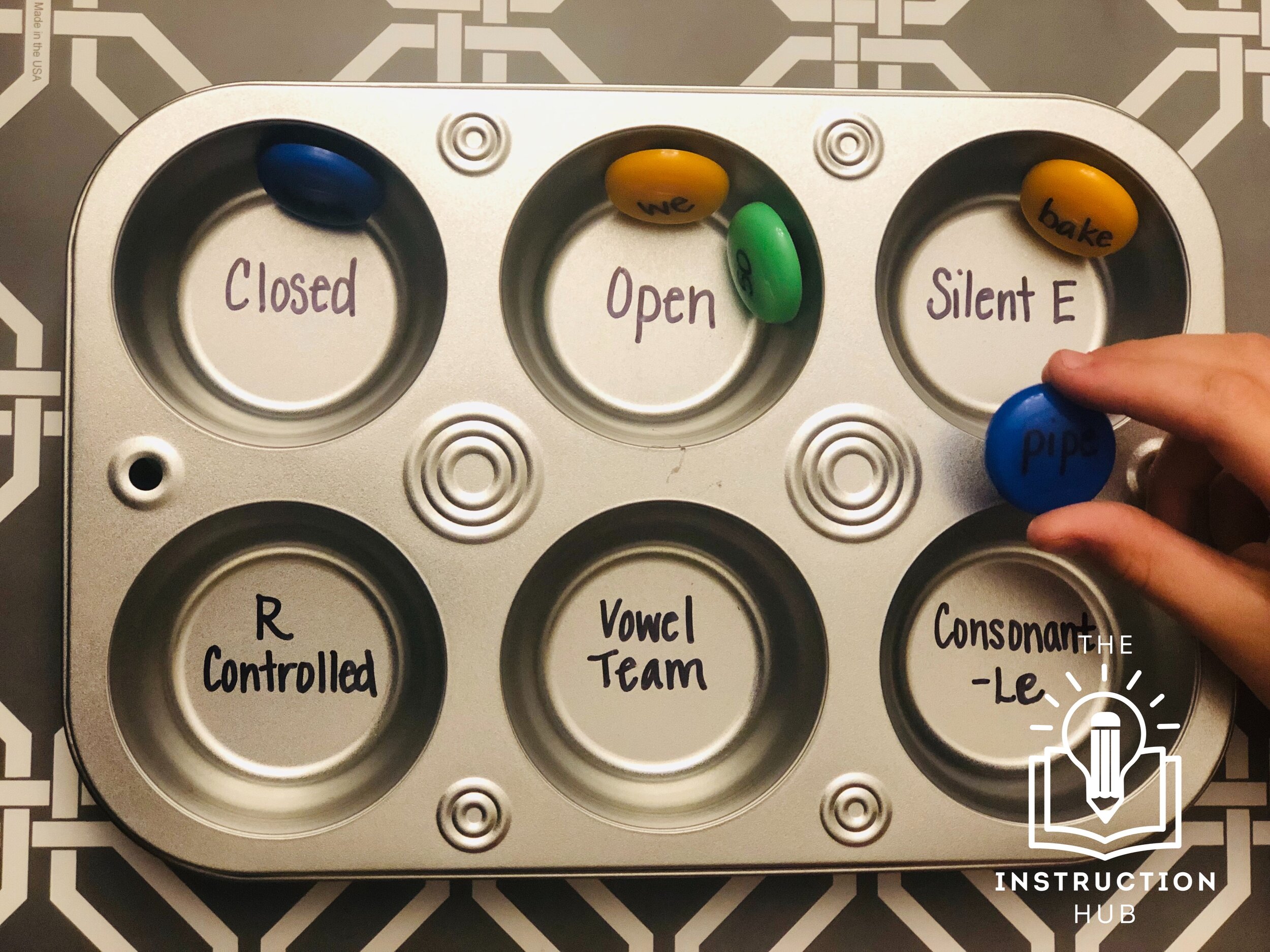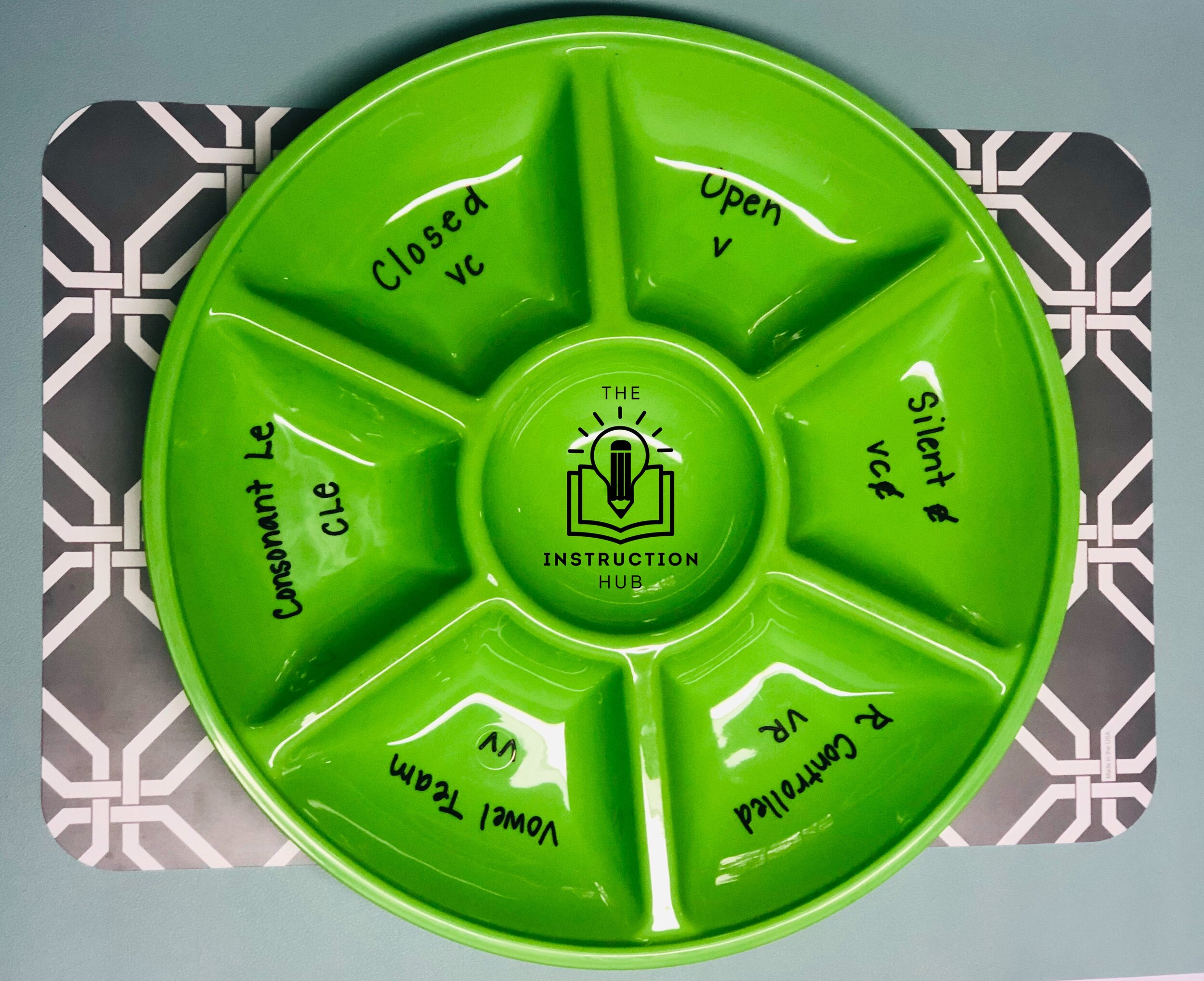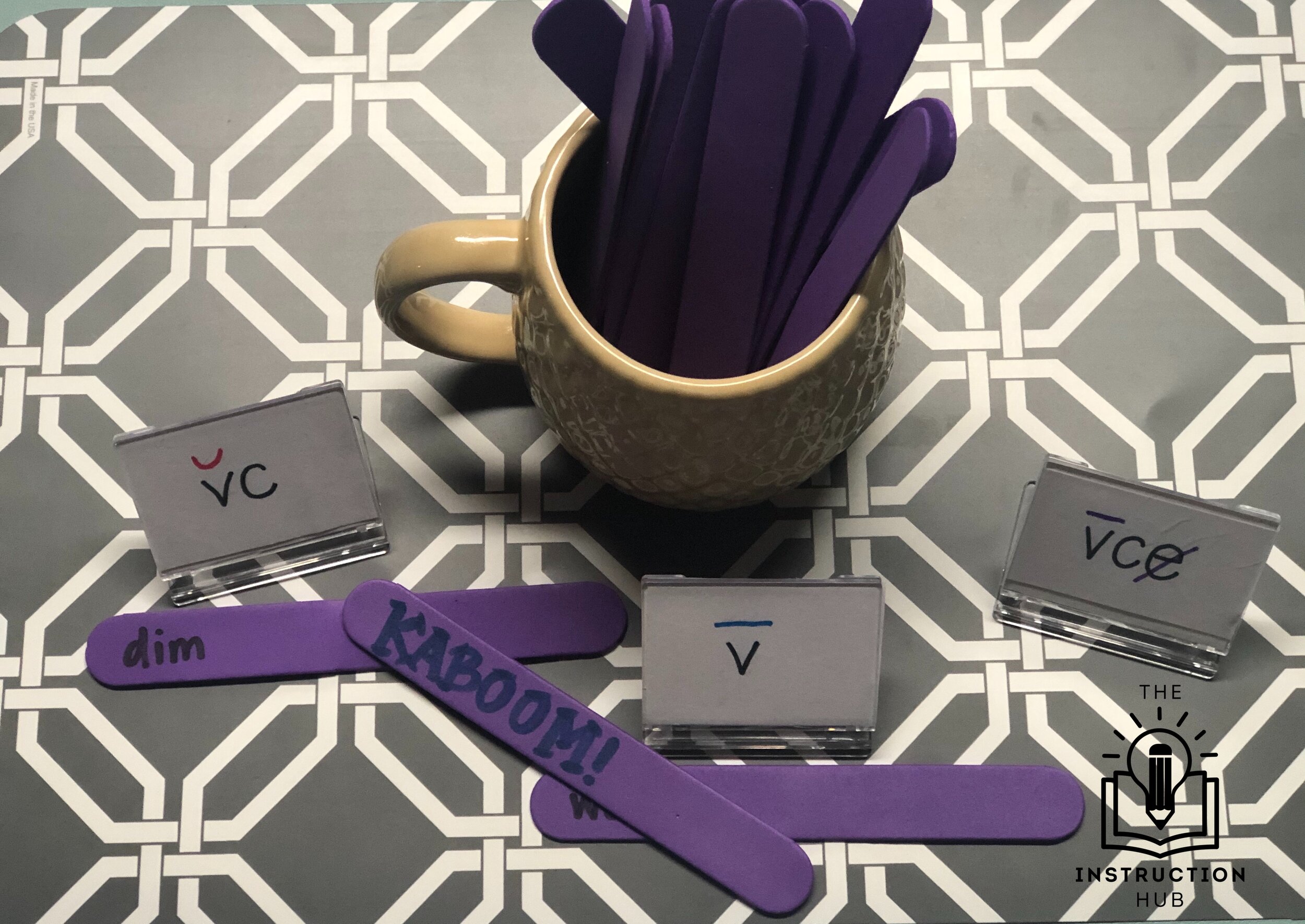Syllables, Snacks, Sorts, and Stick It!
Hopefully you have read the last post and either reviewed or learned about syllables. Now I would like to offer a few ideas for teaching and/or reviewing them. Unintentionally (or subconsciously) there are lots of food references. So grab a snack, beverage, and notepad and let’s get planning! This also may be a longer read, but stick with me there are pictures, ideas, and resources I hope you will find useful!
I will begin by reviewing where to start with syllables:
Where to Start:
Review the definition of a syllable
Introduce the new syllable type with the checkpoints (Check out the Resource Center for helpful slideshows)
Provide an example and walk the student through it with the checkpoints (I do!)
Guide the student through the checkpoints using another example (We do!)
Have students work through additional examples on their own while verbalizing the checkpoints as they look at the pattern. (You do!)
Use a variety of each syllable so that students can see diverse examples For instance when providing closed syllable examples use words (when the student is ready) like the examples below to show how the VC pattern is present in each one. Ex: at, just, flip, blast
Use the C.L.O.V.E.R acronym. Closed, Consonant - Le, Open, Vowel Team, Silent E, R Controlled. You can pick up my version of the C.L.O.V.E.R in the Resource Center.
Here are the checkpoints that I use for the syllable types (Yes, these are not written in correct form, but I say them in a sing-songy way. I typed them as I would say them. See video):
Closed: ends in a vowel and 1 or more consonants…. the vowel is short
Silent E: ends in a vowel, consonant, silent e…. the vowel is long
Open: ends in a vowel…. the vowel is long
R Controlled: has a vowel, r...the vowel is unexpected
Vowel Team: has two or more vowels…. the vowels can be long, short, diphthong
Consonant -Le: has a consonant, l, e...count back three...vowel is unexpected
You can see the video of my hand motions on my YouTube Channel
I have provided a few introductory pages for the syllable types on my Resource Page and Teachers Pay Teachers page. Below are some activities I have used as review and reinforcement, homework assignments, or literacy center ideas.
Fill the Cup!
The first one is a muffin tin sort. I bought this tin at the dollar store. I labeled the tin with a permanent marker. You can also write the first three syllable types on the top and leave the bottom blank for students to put their examples below the label. For this particular student, they knew all six syllable types. I have used sticky notes, cut up index cards, and (my favorite) magnets with examples written on them.
The important part of a sort, or at least to make it more purposeful and meaningful, is to make sure the students code and look for the pattern. I also have them touch and verbalize the checkpoints of the pattern as they are looking at the example. For instance, when my student was looking at the magnet examples, they verbalized the checkpoints as they tracked under the example. They would then read the syllable aloud. After that they sorted them into the correct “cup.” This makes a great literacy center because the students can “fill the cups” and leave it on the table for you to do a quick check before resetting it for the next group. It serves as a nice informal assessment!
Syllable Dip!
The next activity is fit for a party! I am beginning to see my love for food seeping into my examples. Hmmmm….. Anyways, a chips and salsa tray makes for a fun sorting vessel as well. Again, it is important to provide an example of the pattern of the syllable along with the syllable type name. When my students sort their cards, I have them code and label the syllable, read it aloud, and then sort into the tray. I have used this one on one, small group, and whole class. I like this activity to spice up (see what I did there - ha!) my words to read portion of my lessons. This is also a great (and purposeful) literacy center because they can leave it for you to do a quick check before resetting. You can download a syllable sort card set on the Resource Page. PS - This tray was also found at the dollar store.
Kaboom!
In keeping with my food/syllable review theme in this post, consider this game the Emeril Lagasse of review games. When you find a Kaboom stick, it’s a BAM! back into the cup. You will read this thought in my other blog post as well, but I will say it again. The best part about it is that the student wants to keep playing and so they keep reading without even realizing it! #winning!
I use this game with a variety of tasks, but you can certainly use it for syllables. I have sets of just two syllable types or sets with all six. I have my students play in small groups, pairs, or I partner with them if we are in a tutoring or homeschooling session. After they read, I always make sure to ask what kind of syllable and how do they know what kind of syllable it is. This takes it from just a basic review game to one that is challenging them just a bit more. You can also add the categories as I have in the picture so that once they pull a stick to read they have to place it correctly. If they are playing this in a literacy pair or center, I would definitely suggest the category headers so that they can leave them and you can check them (or have them pair check).
For older students, I have them sort their morphemes (the ones that apply) to the syllable types as well. For example, my student would put the roots -ject- and -struct- in the closed syllable category. See my other Kaboom! blog for more ideas for this.
Syllable Stick It!!
In my homeschool (and previously in my classrooms), I like to find ways to get my kids up and moving while still including impactful learning moments. In Syllable Stick It! (an unofficial name for a classroom activity I made/use), I have the syllable types my student has learned posted around the living room or classroom. Not only is the name of the syllable type included BUT you guessed it, also the pattern of the syllable types. I have the students draw a card, code and read, then sprint to the category and stick it on.
You can also extend the activity by having them work in pairs to find two syllables around the room to take and put on the “Combine Syllables” board. Bonus points if they can make it a three syllable word!
I laminate the cards and the syllable concept cards. I use the mini velcro dots to attach them. My husband jokes that my list for Santa should consist of laminating pouches, velcro dots, Expo markers, printer ink, and Flair Pens. I mean he’s not wrong. That’s an amazing list if you ask me! You can pick up a copy of the Syllable Stick It! on the Resource Page or on my Teachers Pay Teachers page.
Just a Simple Sort:
It is not as flashy or as fun, however it is effective! As I am working with my students to map these patterns in their minds, I have them code words and sort based on the syllable type. Something as simple as words on index cards make a typical reading practice task or words to read page (if you are a structured literacy or OG tutor) a bit more interactive (and FUN). It also serves as a great informal assessment for you to know what needs review. Again, when students are efficient with the patterns they know the expected vowel sound and can read the word with increased success.
There are so many other ideas I cannot wait to share. I hope these few will give you a good start, a fresh idea, or a confirmation of the wonderful things you are already doing!
This information is the intellectual property of ©2021 The Instruction Hub. Do not use or repurpose without expressed permission from The Instruction Hub. Please give The Instruction Hub an attribution if you choose to use, reference, or quote/paraphrase copyrighted materials. This includes but is not limited to blogs, social media, and resources.






